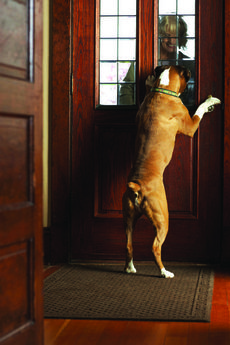Family Features
From puppies who've just been welcomed into the family, to loyal companions who've been providing happiness for years, Americans take serious pride in canine family members.
While everyone loves their four-legged friend within the home, they may not receive such a warm welcome from the neighborhood. Poor social etiquette may be a source of disruption in the community. As a pet parent, it's important to take the time to correct such behavioral issues such as barking or not staying when instructed. There are tools and steps to follow that will help take your dog from bothersome to beloved.
Barking
Oftentimes, the most disruptive action by a dog is also the hardest to control: barking. To get barking under control, consider the following training tips:
First, identify the factors surrounding your dog's barking. Is it more common during the day or at night? Are there triggers nearby such as people, animals or machines? According to the ASPCA, some barking issues can be resolved by removing problematic objects or noises. If the problem can't be fixed by removing objects, have your dog checked to make sure that he or she isn't suffering from a health issue.
Using tools and proper training together is often the best way to bring barking under control. Products that feature audible deterrents are oftentimes a good way to stop incessant yapping from a dog.
Staying
If your dog doesn't have a barking problem, he might have a problem with running free. If your dog commonly attempts to break free during a walk or run, or tries to get loose from the yard or house, try the following steps to control the behavior:
According to the ASPCA, the hardest to achieve but most effective training tip to control your dog when it attempts to run or chase is establishing a call that works. To train your dog, simply practice the specific call repeatedly for as long as it takes until the dog begins to adapt. Each time you make the call toward your dog, reward him or her with a treat to set firm expectations that coming when called is a positive thing. Try practicing this training exercise while on a walk. If your dog begins to wander, simply pat your legs and call it for a treat to set expectations that your dog should stick close to you when outside. Keeping a training tool with you can also be handy in case your dog decides to ignore a command or call.
